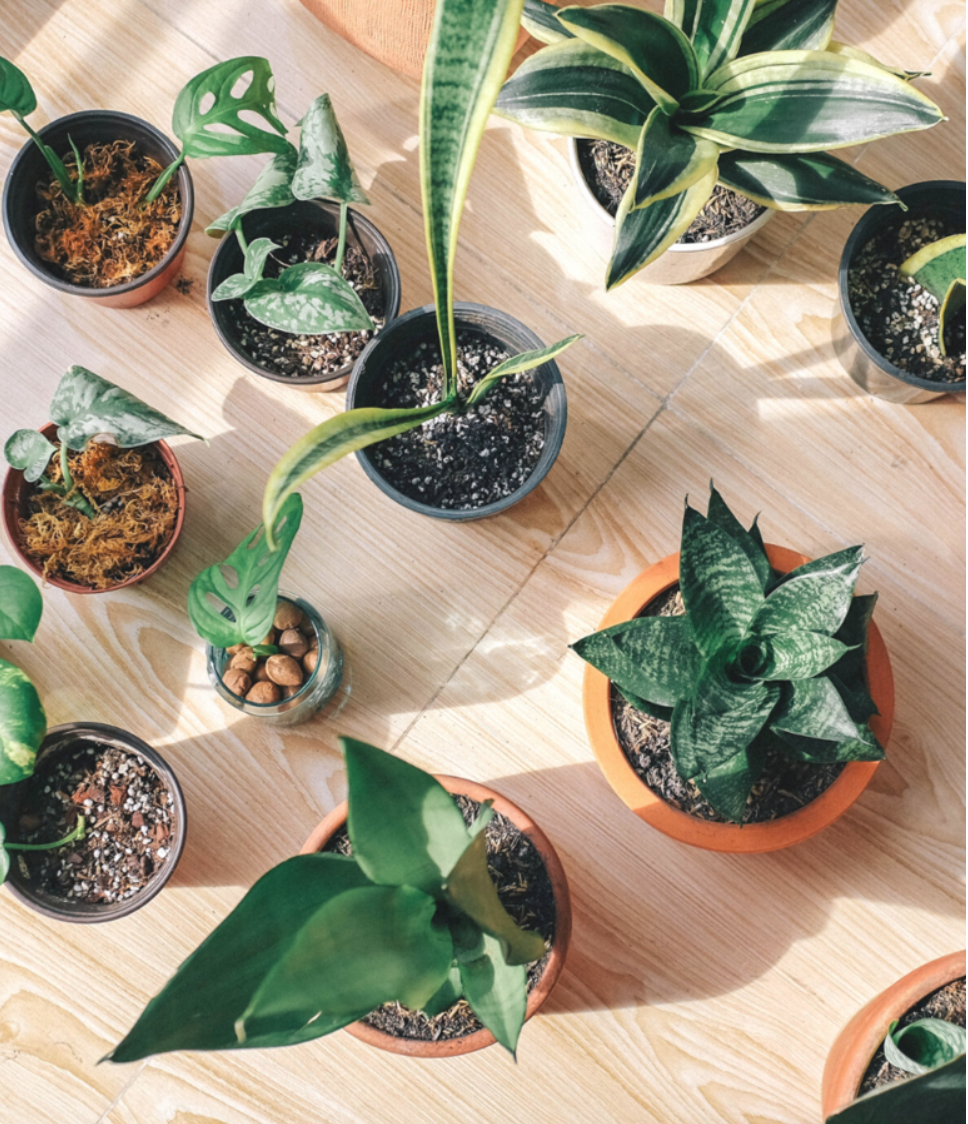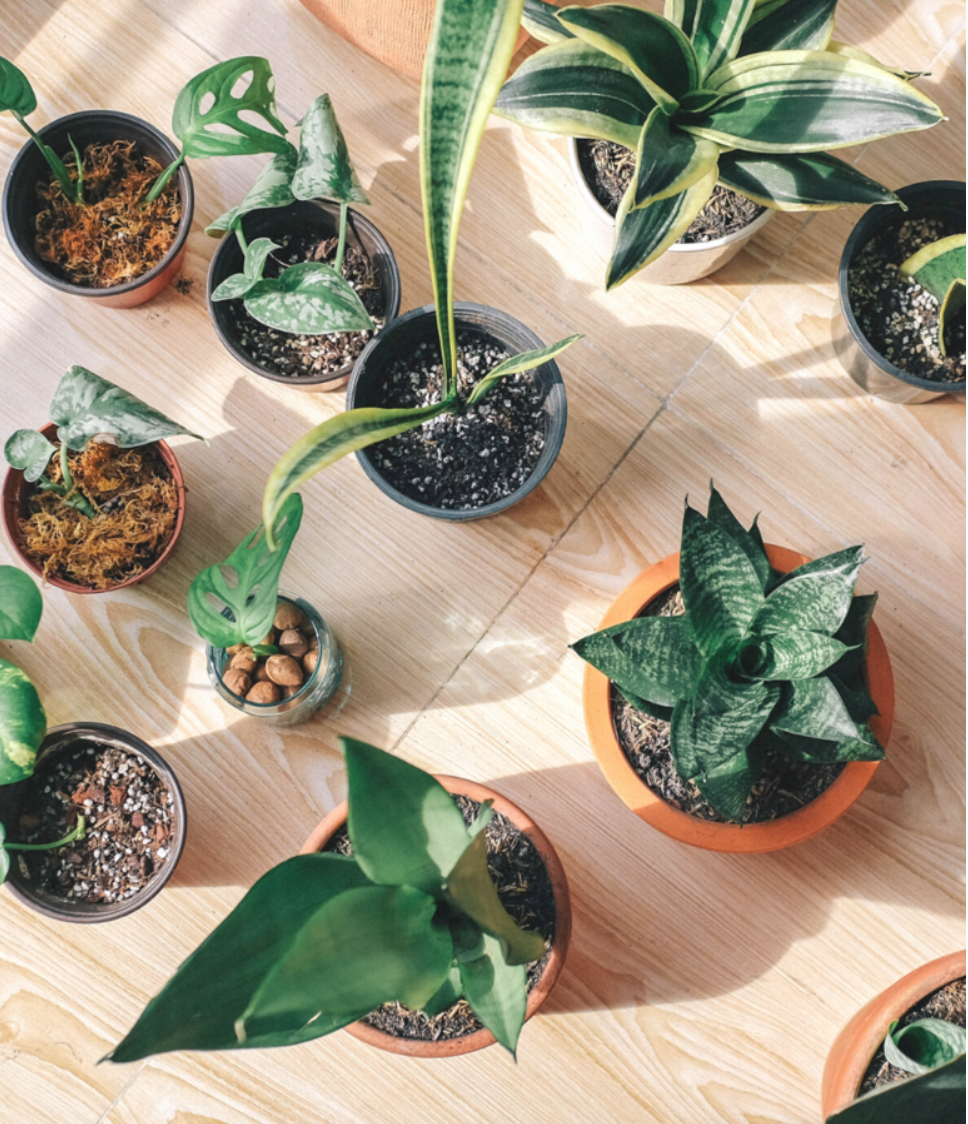Sustainability and Plant Parenthood
- Posted on
- By Maggie Rodger

I’ve been trying to make my houseplant addiction more sustainable. I’ve spent the last couple of years making small changes in my day-to-day habits that will ultimately have a less negative impact on our environment. From eco-friendly & natural beauty products, to making the switch to reusable “un-paper” towels, I’m hopeful that a series of little shifts can add up to bigger change.
Growing Mediums
For those of you that might have missed my last post, let me catch you up to speed: I’ve been trying to make my houseplant addiction more sustainable. I’ve spent the last couple of years making small changes in my day-to-day habits that will ultimately have a less negative impact on our environment. From eco-friendly & natural beauty products, to making the switch to reusable “un-paper” towels, I’m hopeful that a series of little shifts can add up to bigger change. But when I started digging deeper into my newly acquired obsession for houseplants, I realized that the industry as a whole is making a big (and bad) impact on our planet. So I’m working through a three part series that will help me (and hopefully others!) make the best choices we can when acquiring and cohabitating with our plant friends.
Last month, I learned about the wide variety of options that greenhouses and nurseries have for packaging their plants. This month, I’ve spent some time getting closer to the roots of sustainability in the houseplant industry (har har) by learning about a few of the planting mediums that I am familiar with. Whether it’s peat moss, coco coir or that intimidating stuff called leca, I want to take a deeper dive into which choices are not only the best for our plants, but the best for our planet.

Peat Moss
Greenhouses find that growing their plants in peat moss is ideal for a number of reasons: it’s sterile, retains moisture really well, and can easily be mixed with other ingredients to optimize growing conditions. In fact, most bagged potting mix contains a mixture of peat moss, bark and perlite. Most of the peat moss sold in the US comes from Canadian sphagnum moss bogs. In one sense, this is great news: peat moss is harvested close to home, so it doesn’t have to travel far to get to us! Unfortunately, when peat moss is harvested, carbon dioxide is released into the environment (let’s not forget that this greenhouse gas contributes to climate change). While Canadian growers insist that they are harvesting the moss sustainably and at a rate that is respectful to the environment, it may be worth considering alternatives in our day-to-day practices. Saving peat moss for specific uses, such as starting seedlings, means that we will use it at a slower and more sustainable rate.
Coconut Coir
Between the shell and the edible insides of a coconut lies a natural fiber called coconut coir. It’s a renewable byproduct of the coconut industry, and for the past 20 years or so people have been using it as an alternative to peat moss. It has great water retention, and breaks up soil. Additionally, coco coir is often used to make helpful and natural products for gardeners : the fibrous liners for hanging baskets that we often see in our local nurseries and garden centres, and the moulded coco coir pots that can be planted directly in the ground once your seedlings have sprouted. Honestly, the more I read about coco coir, the more excited I am about it...with one big caveat. Obviously, coconuts aren’t grown locally. Coco coir has to travel a huge distance to get to us, and that has lasting and negative impacts on our environment. Being mindful of how far a product travels to get to our homes is an important factor.
Leca
Leca is an acronym that stands for Light Expanded Clay Aggregate. Basically, Leca looks like a bunch of perfectly round brown spheres that are actually burnt clay. Seeing planty people use this medium on social media has me intrigued and intimidated--it looks SO vastly different from soil. Leca is entirely natural, much like peat moss and coco coir. It’s a growing medium that allows you to grow your plants without using soil at all. Furthermore, it is manufactured without harmful emissions. The downside of this growing medium seems to be that it is much more expensive than soil, and it cannot provide any nutrients to your plants. You would have to become well versed in giving your plants the proper nutrients, and ensuring that you understand hydroponics.
My Surprising Conclusion
Researching today’s post didn’t lead me to where I thought it might. As per usual, I anticipated that this issue would be clear and easy to navigate. I assumed that there would be a right choice and a wrong one. I thought it would lead me to cut out growing mediums that aren’t carbon neutral. But of course, as will all issues related to sustainability, it is far better to make thoughtful choices that you can sustain, rather than dramatic changes that won’t last.
So I will be more mindful when shopping for bagged growing mediums that likely contain peat moss. And when I do buy them, I will use them thoughtfully and more sparingly. I still don’t think Leca is for me, but I won’t rule out the possibility of trying it one day. And I will look for ways to keep coco coir in my routine, especially when it comes to swapping out black nursery pots in my spring gardening!
Truthfully, I am just grateful that I am unearthing some small ways to make this beautiful hobby better for our planet. Next month I plan to write about what I think is the most impactful move of all: acquiring plants sustainably. Until then, I’d love to know what you think of my breakdown of peat moss, coco coir and leca. What is your favourite growing medium? Let us know in the comments section here on the blog, or over on Instagram!
